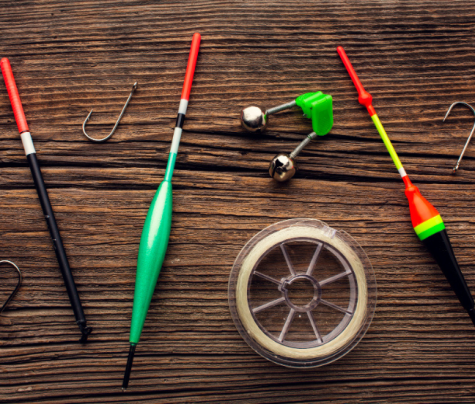
- Since the Brady Act’s implementation in 1994, over 300 million background checks have been conducted for gun purchases.
- According to the National Shooting Sports Foundation, the firearms industry generated over $70 billion in economic impact in 2022.
- A 2023 Gallup poll showed that 57% of Americans support stricter gun laws, reflecting increasing public concerns about gun safety.
The firearms industry has seen many changes over the years, especially in terms of legal implications. Shifts in laws, public opinion, and technology have all played a role in reshaping how firearms are manufactured, sold, and regulated.
Understanding these changes can offer valuable insight into where the industry stands today and where it might be headed in the future.
Over time, new laws and regulations have responded to safety concerns, technological advancements, and public demand for responsible gun ownership.
Today, the industry must navigate a complex landscape of federal, state, and local rules. This has impacted not only gun manufacturers but also sellers and consumers.
These legal changes are often prompted by concerns over safety, leading to ongoing debates about how to balance Second Amendment rights with public welfare.
How Has The Gun Industry Changed Through The Years?
The gun industry is a dynamic realm where the sands of time have brought about substantial changes, shaping the firearms we know today. These shifts have occurred in various domains, from technological advancements to alterations in regulations and ever-evolving consumer preferences.
Technological Advancements
The history of firearms is a remarkable journey of technological innovation. It all began with the earliest black powder muskets, a far cry from the sophisticated firearms of today. The transition from flintlock muskets to modern firearms is a story of impressive technological advancement. Rifling, a key innovation, brought about greater accuracy by imparting a spin to the bullet, making it more stable in flight. Interchangeable parts transformed manufacturing and maintenance, ensuring firearms could be more easily repaired and upgraded.
The introduction of smokeless powder represented a monumental shift. It replaced black powder with a cleaner, more efficient propellant, enhancing both safety and performance. Semi-automatic and fully automatic firearms, such as the iconic AK-47 and AR-15, revolutionized personal defense and military operations. These innovations allowed for rapid, repeatable firing, significantly impacting combat tactics.
A recent breakthrough is the advent of smart guns, incorporating biometric and electronic systems. These firearms offer advanced safety features and personalized access control, making unauthorized use nearly impossible. They represent the cutting edge of firearm safety, emphasizing the ongoing pursuit of safer, more efficient firearms.
Regulatory Changes
The gun industry’s transformation has not been solely driven by technological progress. Regulatory changes have played a pivotal role, often influenced by shifting societal concerns. Changes in regulations have had significant impacts on the industry.
Over time, regulations have fluctuated, responding to concerns about safety, crime, and individual rights. This fluctuation has led to periods of increased scrutiny and tighter restrictions, as well as phases of deregulation and relaxed rules. For example, the 1994 Federal Assault Weapons Ban in the United States was a significant piece of legislation that banned the manufacture of certain semi-automatic firearms for civilian use, but it expired in 2004.
In many countries, there’s a persistent push for more comprehensive background checks, mandatory waiting periods, and the control of country specific types of firearms. International arms trade is influenced by arms control treaties and agreements, which are aimed at restricting the flow of weapons to conflict zones and human rights violators, thereby shaping the industry’s landscape on a global scale.
Consumer Preferences
Consumer preferences have evolved alongside technological and regulatory changes. The diversification of the market is a testament to this evolution. Today, the industry caters to a wide range of consumer preferences.
For personal defense, the demand for concealed carry handguns has risen substantially. These compact, easily concealable firearms have become popular choices for personal protection.
Tactical rifles, equipped with various accessories like optics and foregrips, appeal to those interested in recreational shooting and home defense. Specialized competition firearms designed for accuracy and speed have also gained prominence, reflecting a growing interest in competitive shooting sports.
Customization is another notable trend. The rise of gun culture, facilitated by online forums, YouTube channels, and social media, has fueled a passion for custom firearms. This enthusiasm has given rise to a flourishing niche industry of gunsmiths and manufacturers offering bespoke designs and accessories to meet individual preferences.
Factors Influencing the Firearms Industry
The firearms industry is impacted by various factors that shape its growth, regulations, and overall direction. From shifts in public opinion to economic conditions and technological advancements, here are some key influences driving change in the industry.
Government Regulations and Policies
One of the most significant factors affecting the firearms industry is government regulation. Federal, state, and local laws set guidelines for manufacturing, selling, and owning firearms, often shifting in response to public safety concerns.
For instance, events like mass shootings frequently lead to new legislative discussions and proposals for stricter gun control laws.
Policies like the Brady Handgun Violence Prevention Act, which introduced background checks, have had a lasting impact, and further regulations could reshape industry practices and reduce certain types of sales.
Public Opinion and Social Trends
Secondly, public opinion plays a powerful role in influencing the firearms industry. As debates over gun ownership and safety continue, changes in societal attitudes can impact sales and policy changes.
In periods of heightened concern over safety or crime, there’s often an increase in gun sales as people seek personal protection.
Conversely, growing support for gun control can result in public pressure for more restrictions, potentially affecting manufacturers and distributors.
Technological Advances
Technology is rapidly changing the firearms industry. Innovations such as smart guns that only authorized users can fire, and advancements in 3D printing are creating new products and influencing legal discussions.
While technology can improve safety, it also brings new challenges, such as regulating 3D-printed firearms or “ghost guns,” which are often untraceable. These technologies require the industry and lawmakers to adapt, balancing safety concerns with technological freedom.
Economic Factors
Finally, the state of the economy can also impact the firearms industry. During economic downturns, discretionary spending, including firearms purchases, may decrease.
Conversely, a strong economy can increase demand for recreational firearms for hunting and shooting sports.
Economic factors also affect manufacturing costs and may influence the prices of firearms and ammunition.
Firearms Industry: What is the Current State?
The firearms industry in the United States has experienced significant changes over recent years, shaped by shifting regulations, public debates, and technological advances.
This industry is heavily regulated and highly scrutinized, with ongoing discussions about safety, rights, and responsibilities.
Increasing Regulations and Legal Scrutiny
Federal, state, and local laws now more closely monitor firearms manufacturing, sales, and ownership. For example, background checks have become stricter in some states, and regulations around who can purchase firearms have tightened.
This comes amid growing calls for gun reform to address concerns over public safety. Laws like the Brady Handgun Violence Prevention Act and various state-specific measures aim to prevent firearms from reaching individuals deemed a risk.
These legal frameworks can vary widely, creating a patchwork of rules that gun manufacturers and dealers must navigate carefully.
Technological Advancements and New Products
Rapid technological advancements also influence the firearms industry.
From smart guns that only authorized users can fire to customized firearms, new technology changes what’s available on the market.
However, these advancements also raise legal questions about safety standards, liability, and responsible use.
For instance, the development of 3D-printed firearms and untraceable “ghost guns” has added a layer of complexity to legal enforcement as lawmakers work to keep pace with these innovations.
Economic and Cultural Impact
Despite challenges, the firearms industry remains a substantial part of the U.S. economy, supporting thousands of jobs and generating significant revenue.
Firearms are deeply rooted in American culture and identity; many view ownership as a constitutional right.
This cultural significance and ongoing legal discussions mean the industry will remain a focal point in national debates.
Future of the Firearms Industry and Its Legal Implications
Technological advancements, evolving public attitudes, and tighter regulations will likely shape the future of the firearms industry. These changes bring new legal implications affecting manufacturers, sellers, and gun owners.
Stricter Regulations on Gun Sales and Ownership
As calls for gun reform grow, lawmakers may introduce more regulations on who can buy firearms and under what conditions.
This could include expanded background checks, waiting periods, and possibly even restrictions on certain types of firearms, like assault weapons. If new federal or state laws pass, firearms manufacturers and sellers must adjust to ensure compliance.
For gun owners, new regulations may mean stricter requirements for storage, registration, or even limits on ammunition purchases.
Impact of Technology on Legal Standards
Advances in firearm technology, like smart guns that can only be fired by authorized users, will likely become more popular and bring new legal standards.
As smart and safety-enhanced firearms enter the market, the industry must adapt to new manufacturing and safety requirements.
Additionally, the rise of 3D-printed firearms and “ghost guns” (untraceable guns without serial numbers) poses challenges for law enforcement and regulatory agencies.
Legislators are likely to focus on regulating these weapons, leading to stricter laws around firearm production and ownership.
Balancing Gun Rights with Public Safety
The future of the firearms industry will likely continue to involve debates over balancing Second Amendment rights with public safety concerns.
The growing divide between gun control advocates and gun rights supporters will drive political discussions and influence future laws.
In response, the firearms industry may need to focus more on safe gun storage solutions, educational efforts, and compliance with evolving safety standards to ease public concerns.
Read Also:
- 10 Questions To Ask Your Lawyer Before You Sign Them For Your Case
- How Do Game Conservation Laws Affect Hunters: Do We Save Animals or Not?
- Which Legal Cases Would Require a Federal Defense Lawyer? A Guide to Federal Charges










0 Reply
No comments yet.